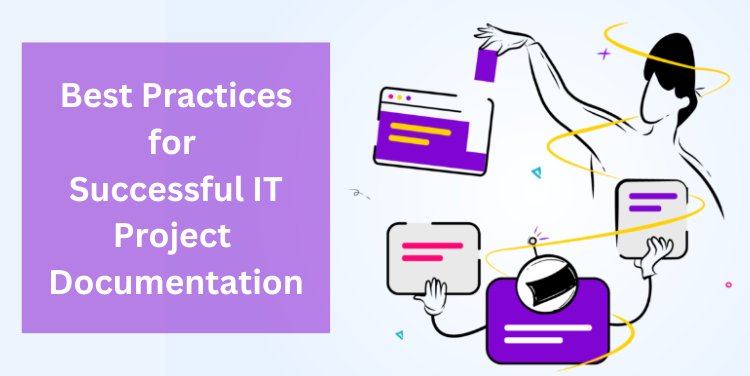Best Practices for Successful IT Project Documentation

In the fast-paced world of IT, effective project documentation can often be overlooked or rushed through. However, solid documentation is crucial for the success of any IT project, helping to ensure clear communication, seamless collaboration, and smooth project execution from start to finish.
Here are some essential tips for creating comprehensive and successful IT project documentation:
Define Documentation Standards: Establish clear standards for documentation early in the project lifecycle. This includes guidelines for formatting, language, naming conventions, and version control. Consistency is key to ensuring that documentation is easy to understand and navigate for all team members.
Start Early and Update Regularly: Begin documenting the project from the planning phase and continue to update it throughout the entire project lifecycle. Waiting until the end to document can lead to crucial details being overlooked or forgotten. Regular updates ensure that documentation remains accurate and reflects the current state of the project.
Document Requirements and Objectives: Clearly outline the project's goals, objectives, and requirements. This provides a roadmap for the project team and stakeholders, ensuring that everyone is aligned on what needs to be achieved. Include both functional and non-functional requirements to capture all aspects of the project.
Document Design and Architecture: Document the design and architecture of the IT solution, including system diagrams, data flow diagrams, and any technical specifications. This provides a clear understanding of how the solution is structured and how different components interact with each other.
Document Implementation and Configuration: Detail the steps involved in implementing and configuring the IT solution. This includes installation instructions, configuration settings, and any customizations or integrations. Providing clear, step-by-step instructions helps ensure that the solution is implemented correctly and consistently.
Capture Test Plans and Results: Document the test plans, test cases, and test results for the project. This includes both functional and non-functional testing, such as performance testing and security testing. Tracking test results allows for the identification and resolution of any issues early in the project lifecycle.
Include Troubleshooting and Support Information: Anticipate potential issues and document troubleshooting steps and support information. This empowers project teams and support staff to quickly address any issues that arise during implementation or operation. Include contact information for key stakeholders and support resources.
Provide User Documentation: Develop user documentation such as user manuals, training materials, and FAQs to support end-users. This helps ensure a smooth transition to the new IT solution and promotes user adoption and satisfaction.
Review and Validate Documentation: Regularly review and validate the documentation with key stakeholders and subject matter experts. This helps identify any gaps or inconsistencies and ensures that the documentation accurately reflects the project's scope and requirements.
Archive Documentation for Future Reference: Once the project is complete, archive the documentation for future reference and auditing purposes. This ensures that valuable project knowledge is preserved and can be accessed by future project teams or for compliance purposes.
By following these best practices for IT project documentation, you can enhance communication, streamline collaboration, and increase the likelihood of project success. Remember, documentation is not just a one-time task but an ongoing process that requires diligence and attention to detail throughout the project lifecycle.
What's Your Reaction?















